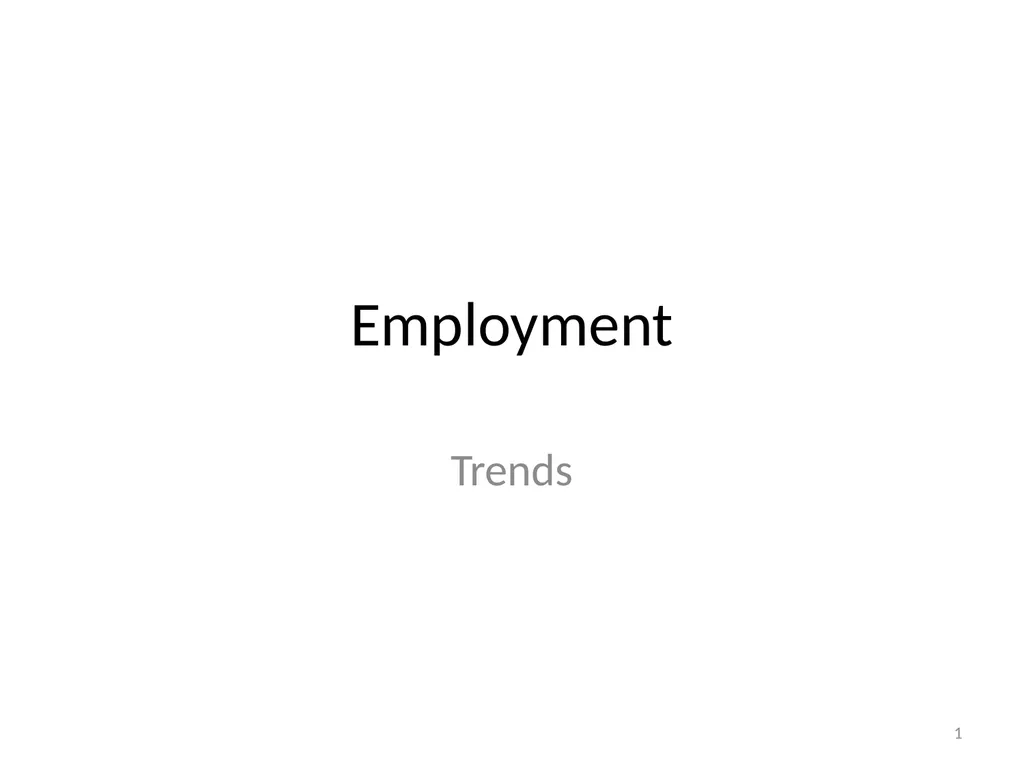Employment Trends 1 Trends in employment level
Author : aaron | Published Date : 2025-06-23
Description: Employment Trends 1 Trends in employment level Total employment How does it look like since WWII Employment rate employmentworkingage population How does it look like since WWII How Men out women in Shifts in composition of
Presentation Embed Code
Download Presentation
Download
Presentation The PPT/PDF document
"Employment Trends 1 Trends in employment level" is the property of its rightful owner.
Permission is granted to download and print the materials on this website for personal, non-commercial use only,
and to display it on your personal computer provided you do not modify the materials and that you retain all
copyright notices contained in the materials. By downloading content from our website, you accept the terms of
this agreement.
Transcript:Employment Trends 1 Trends in employment level:
Employment Trends 1 Trends in employment level Total employment How does it look like since WWII Employment rate = (employment/working-age population) How does it look like since WWII How? Men out, women in Shifts in composition of employment Fishing Agriculture Manufacturing (good-producing) Service Government Non-government 2 Now, about ¾ in services All around the world Why the big change? Relative productivities Real incomes and necessities/luxury goods Contracting services out and accounting for that Globalization and “outsourcing” Many (not all) services are difficult to outsource Services as inputs 3 Shifts in occupations More Managerial Clerical Sales Communication Finance Less Manufacturing Mechanical Unskilled Transportation Primary Same Construction 4 Shifts in modes Non-standard employment Not full-time, not full-year, not permanent paid Part-time Less than 30 hrs/week About 12% in 1970s About 20% in 2000s Strong gender bias - women Mostly service sector Many may be underemployed Would prefer full time 5 Multiple jobholding (moonlighting) Gender bias – men (3/4) But women increase (sign of underemployment?) Age bias - young Trend to multi-career Main reason reported is financial Own-account self-employment Working on your own without paid employees Gender bias – men Age bias – older 6 Temporary work Term and contract 1/2 Gender bias - men Casual and on-call 1/4 Gender bias - women Seasonal 1/4 Gender bias – men Bad data due to changing definitions Why the increase? Demographic changes – not clear Businesses trying to go around regulations Payroll tax Mandated benefits Globalization and flexibility Functional flexibility Numerical flexibility 7 Trends in hours of work DOWN 1900, about 59 hrs/week Now, about 38 hrs/week Why? Growing productivity and leisure time as luxury 8














